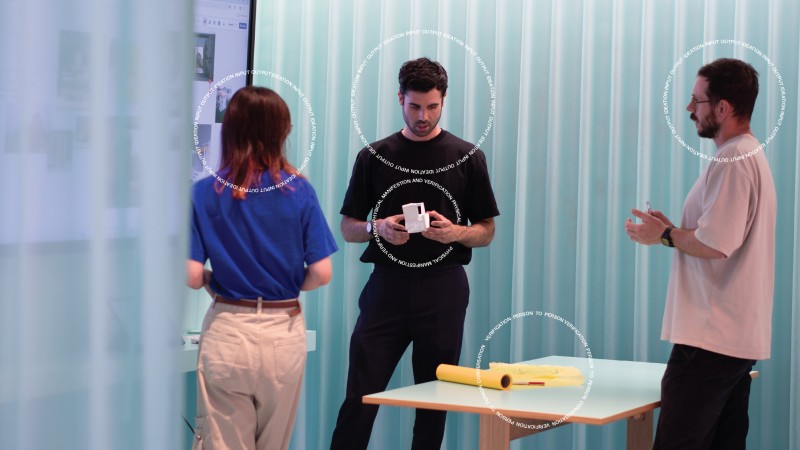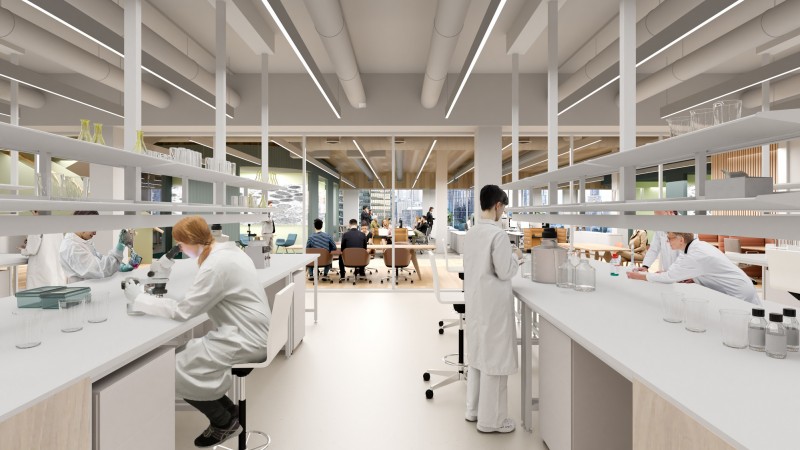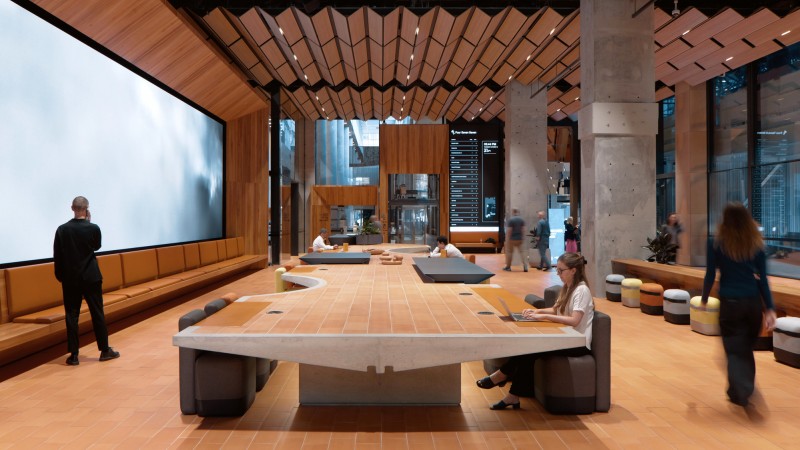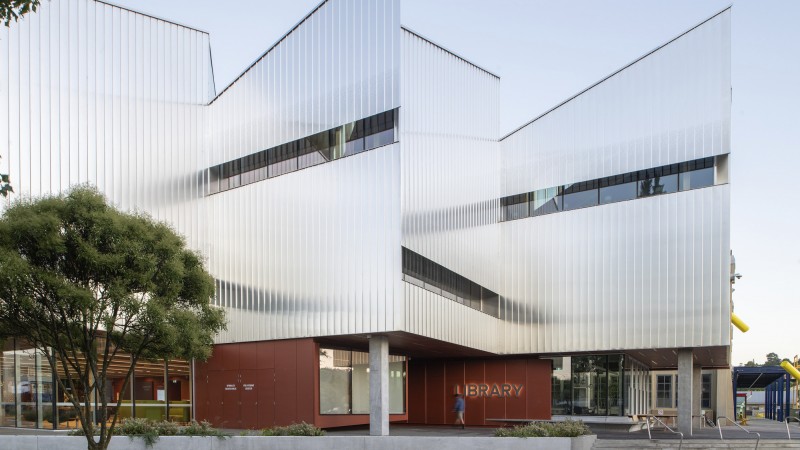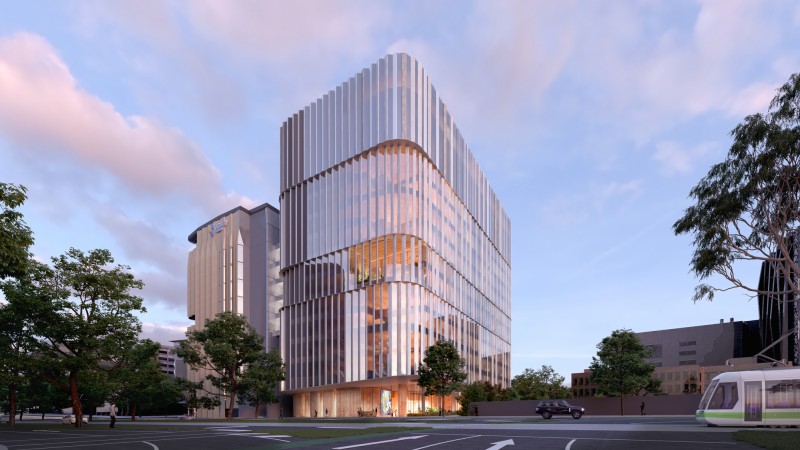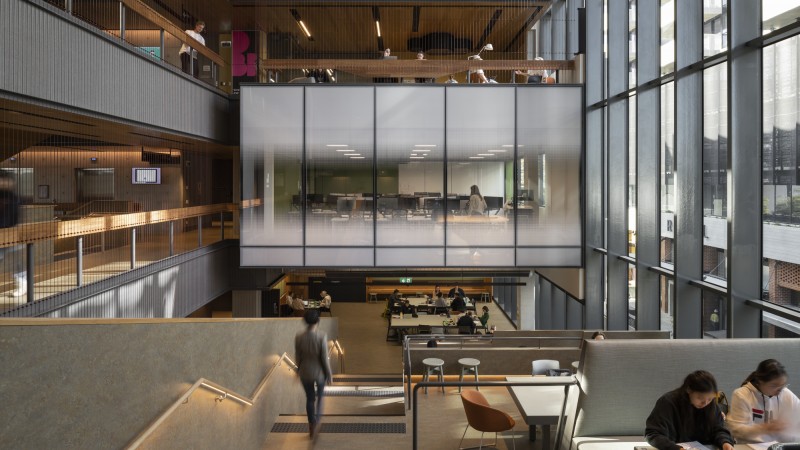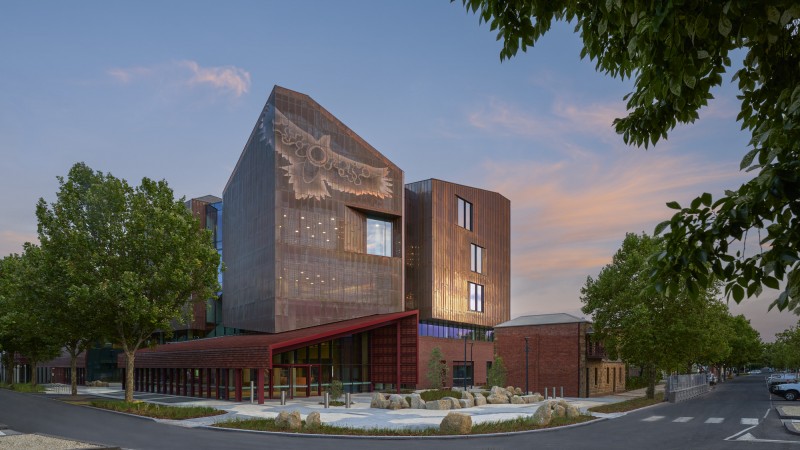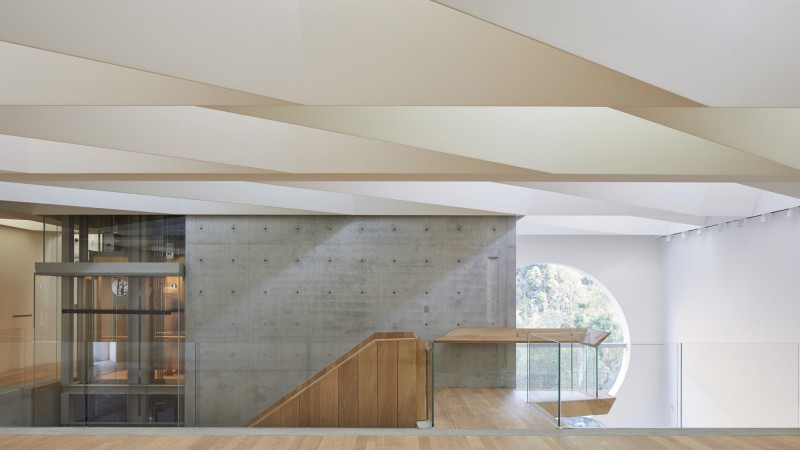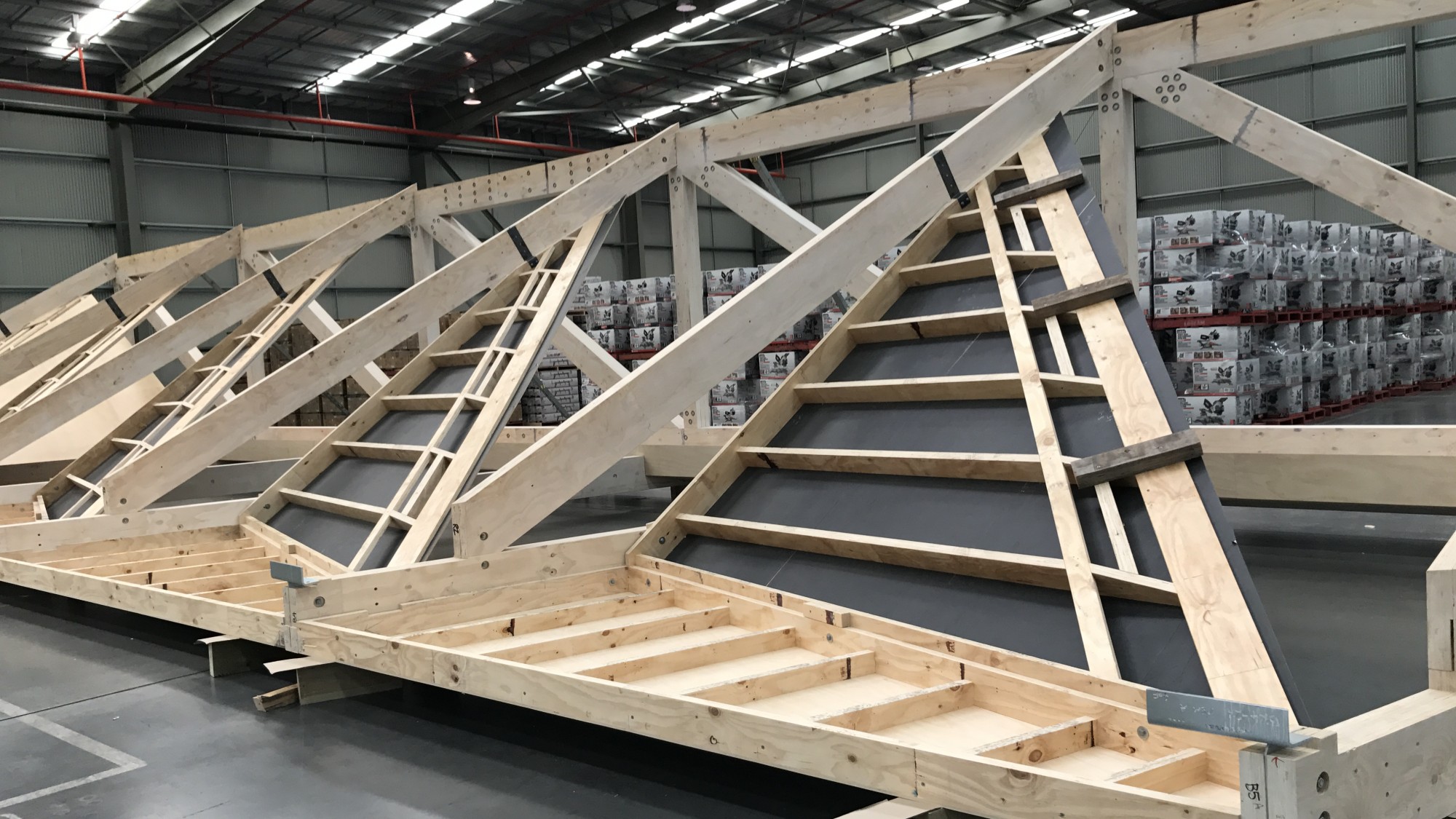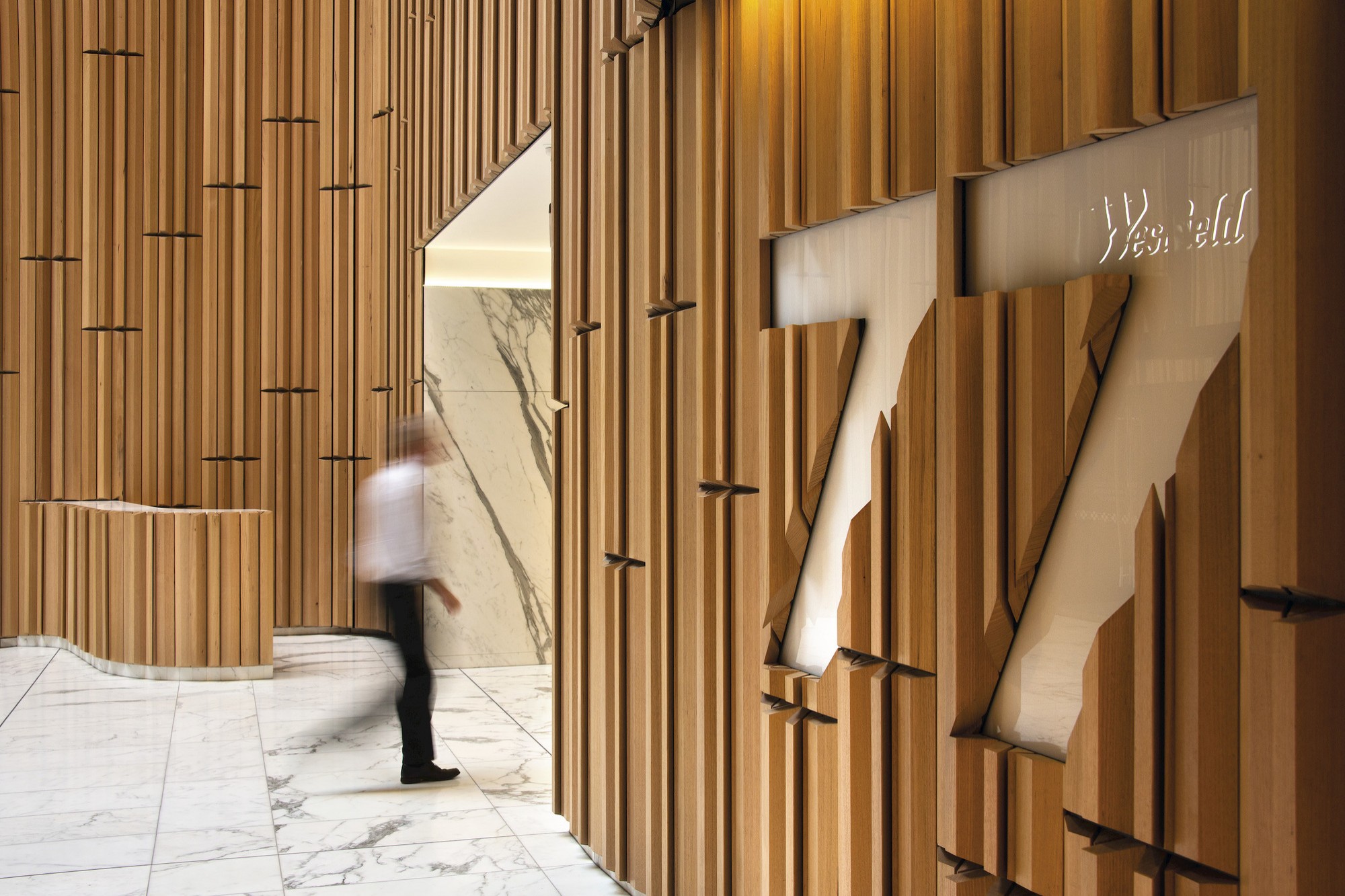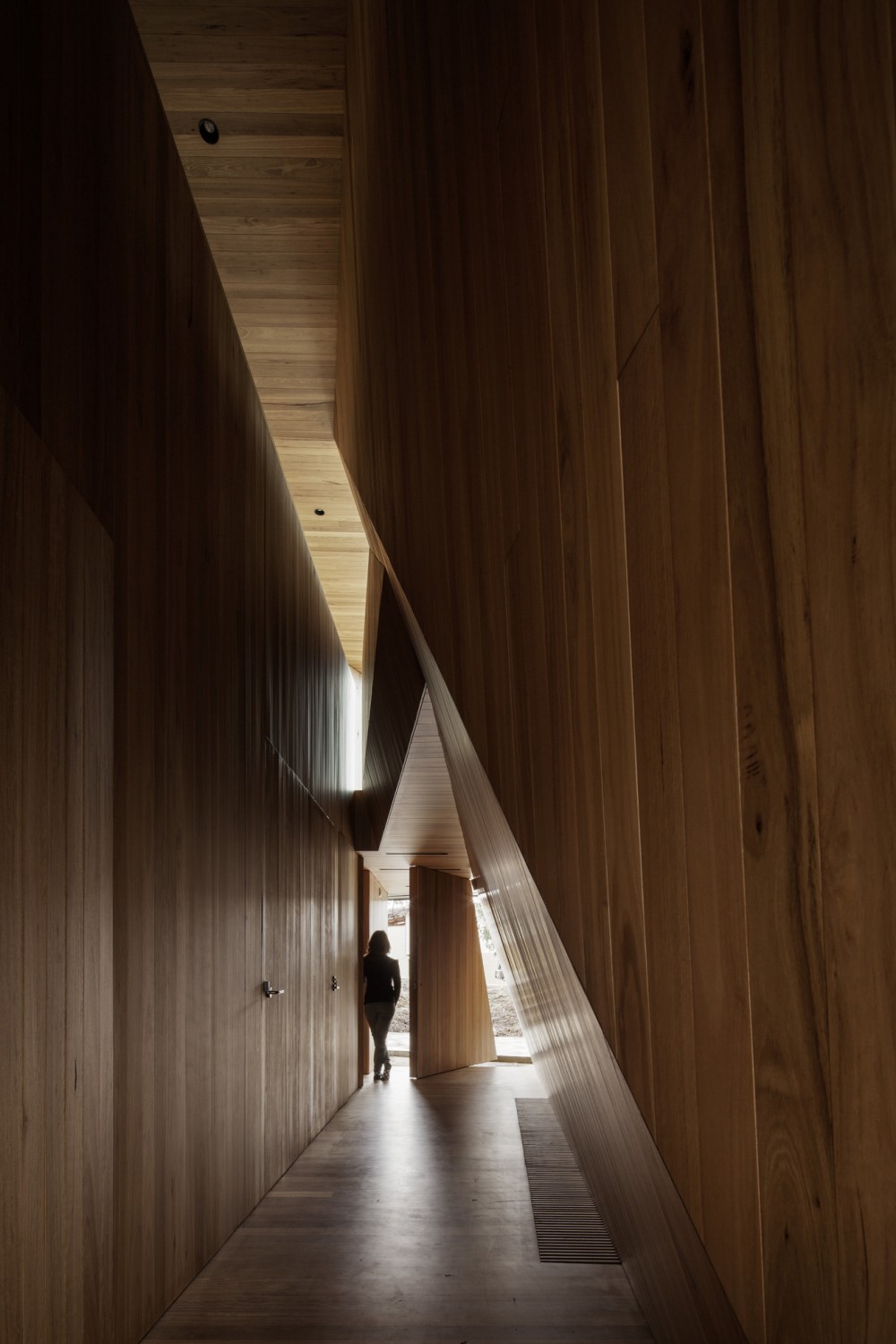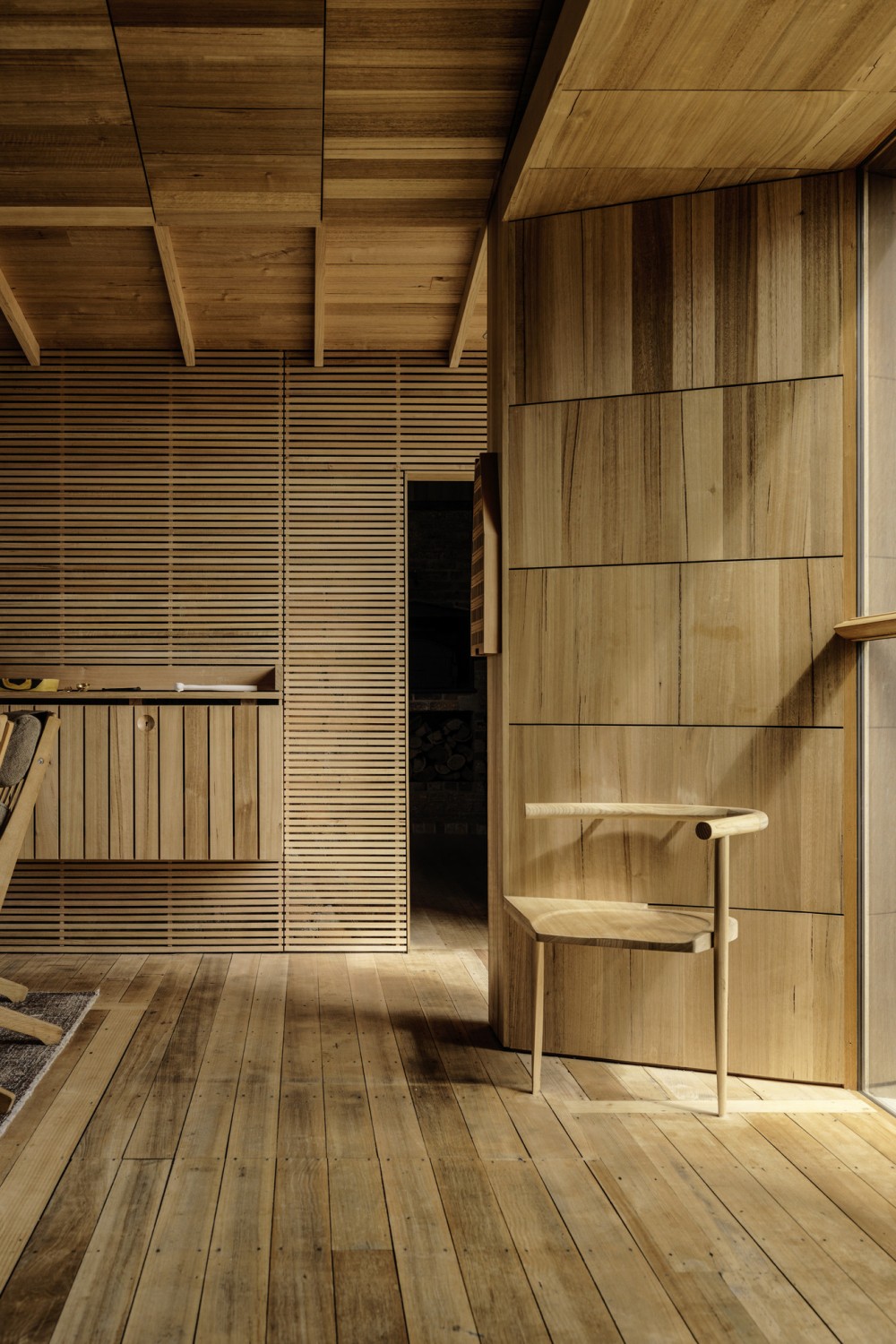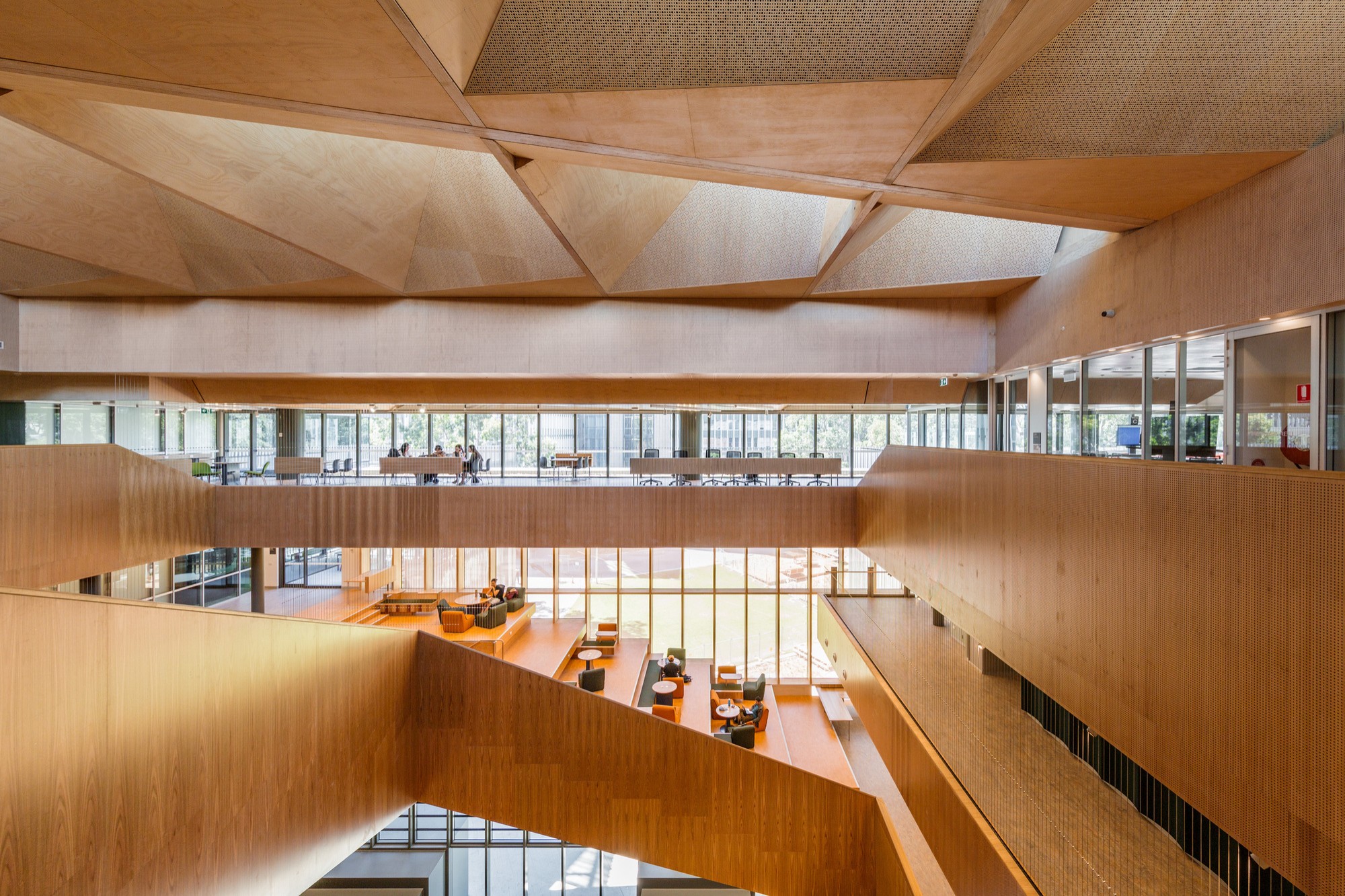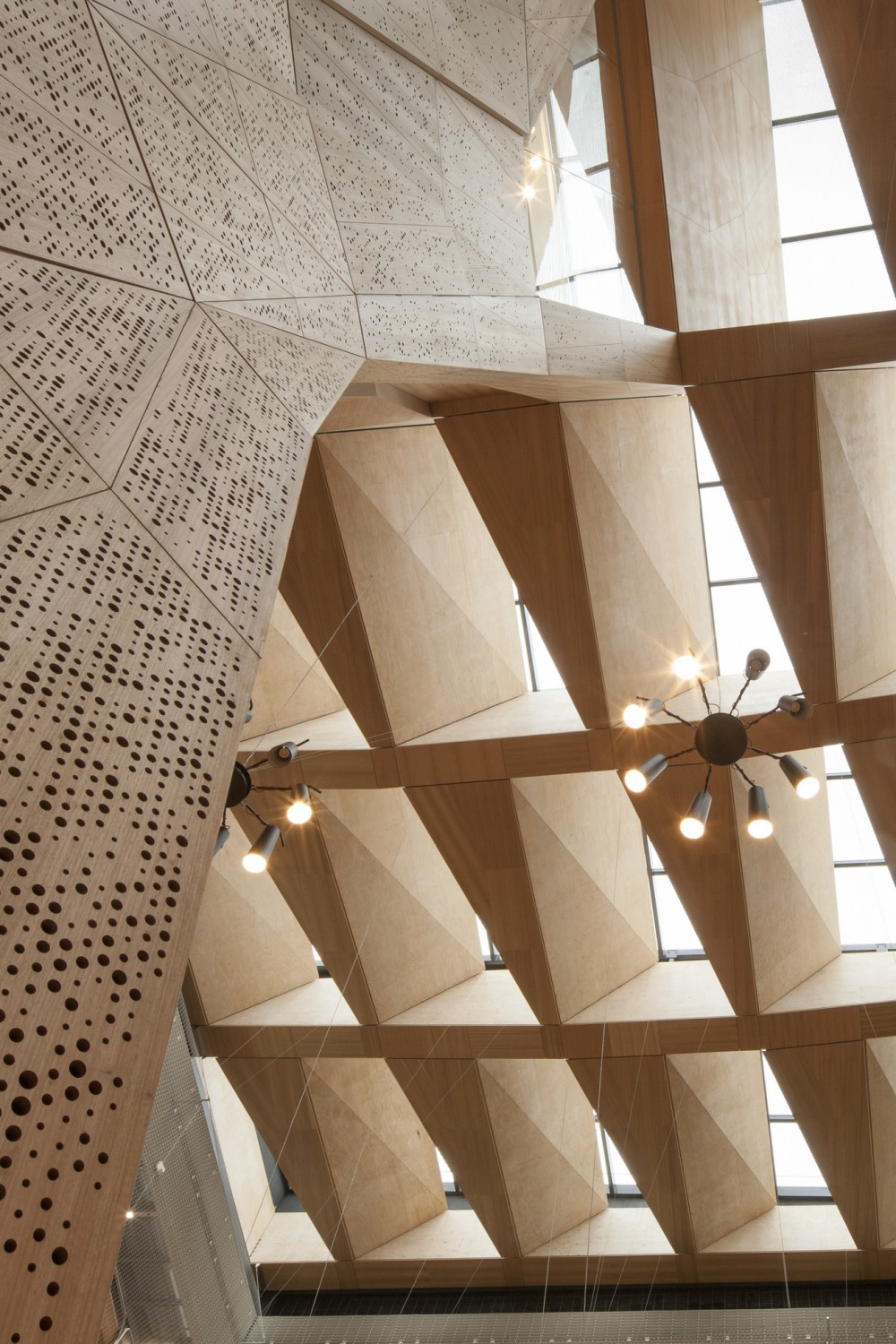Eight years ago, in a project workshop for the Melbourne School of Design the discussion turned to the roof structure needed to span across the central design hall. The Wardle team made the unconventional suggestion to use timber rather than steel or concrete. Any initial scepticism in the room dissipated quickly. Enthusiasm amongst the project team grew around pushing the boundaries of timber construction at that time. The result is an extraordinary spatial experience.
The sensory qualities of timber make for a frequent conversation topic in JWA’s studios. Visually, its grain and colour convey a natural complexity. The milled board, its surface, section and joints, encourages touch. Acoustically, it stretches reverberation time. Solid timber brings with it an undeniable aroma. Timber immediately engages the senses. In fact, research suggests, at least anecdotally, that these qualities can alleviate one’s experience of stress, which makes it highly appealing for the design of hospitals, workplaces, and learning environments.
Our interest in timber has been long-running and extensive. Our own research has delved into the debate around provenance and the relative advantages of recycled timber or wood sourced from a managed forest or a plantation. It has extended to the way timber sequesters carbon whereas the manufacture of concrete and steel releases carbon into the atmosphere. This has driven the advancement of timber technologies for larger structures, particularly in Europe but now also in Australia. It also coincides with an evolution of the construction industry toward prefabrication of modular elements off site that are then assembled on site, a process that timber is very suited to.
